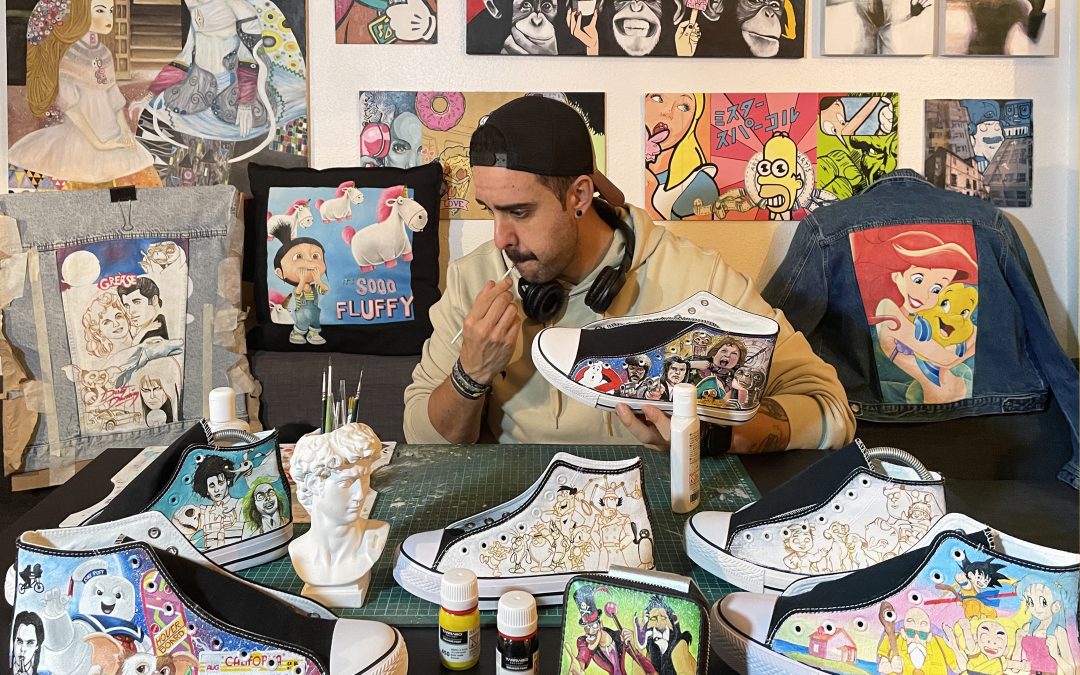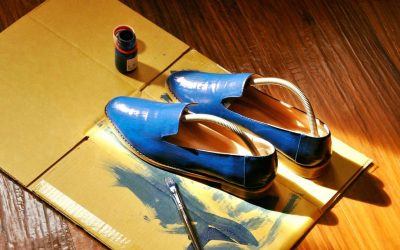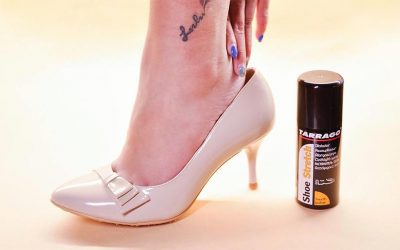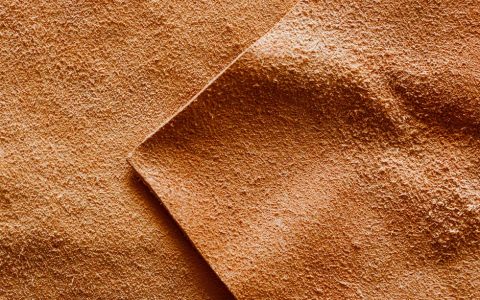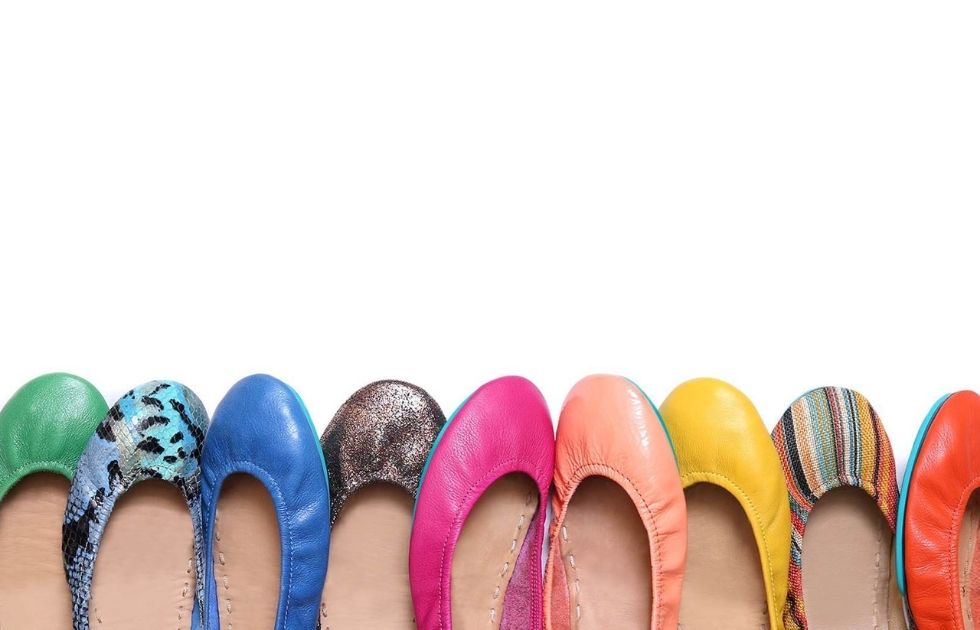If you are passionate about the world of customisation, you have surely seen the incredible designs of Nando, the artist behind Maquinando Arte, an expert in painting on denim and canvas who creates surprisingly fine and precise strokes. From Tarrago we have been following his career and we contacted him to share his story and some of his tricks. Let’s get to know him!
Nando, for those who don’t know you, can you briefly introduce yourself?
Hello, my name is Nando and I’m from Valencia, although I’ve been living in Alicante for years. I’m a draughtsman and, as such, I’ve been working for several years in architecture and engineering offices. Art has always been very present in my life as my greatest hobby, since I can remember, has been drawing and painting. That’s why, just when I thought I had everything on track, I found myself unemployed and took the opportunity to go to university; something I had always wanted to pursue but, until then, had not been able to do. It was a sign; my life was destined for art.
So, 4 years later, I graduated in Fine Arts at the UPV. Apart from drawing and painting, I’m a big fan of cinema and series, which I sometimes use to get ideas and references for future projects or simply to evade myself.
How did you start customising?
My beginnings in the world of customisation came about by chance; during the first year of my degree I was invited to a birthday party and, as usual, I had to give a gift to the person in question. I didn’t know what to give and I got out of it by painting a pair of kicks. They were quite successful but, looking at them in photos years later, I have to say that they had more mistakes than successes:
I painted them with fabric markers but went over them with fine-tipped, alcohol-based perms, a mixture that resulted in smudged colours and rough lines. But we all have a beginning, a starting point thanks to which we became what we are today: a path full of successes but also of failures, through which I have been learning, perfecting my creative process and refining my technique.
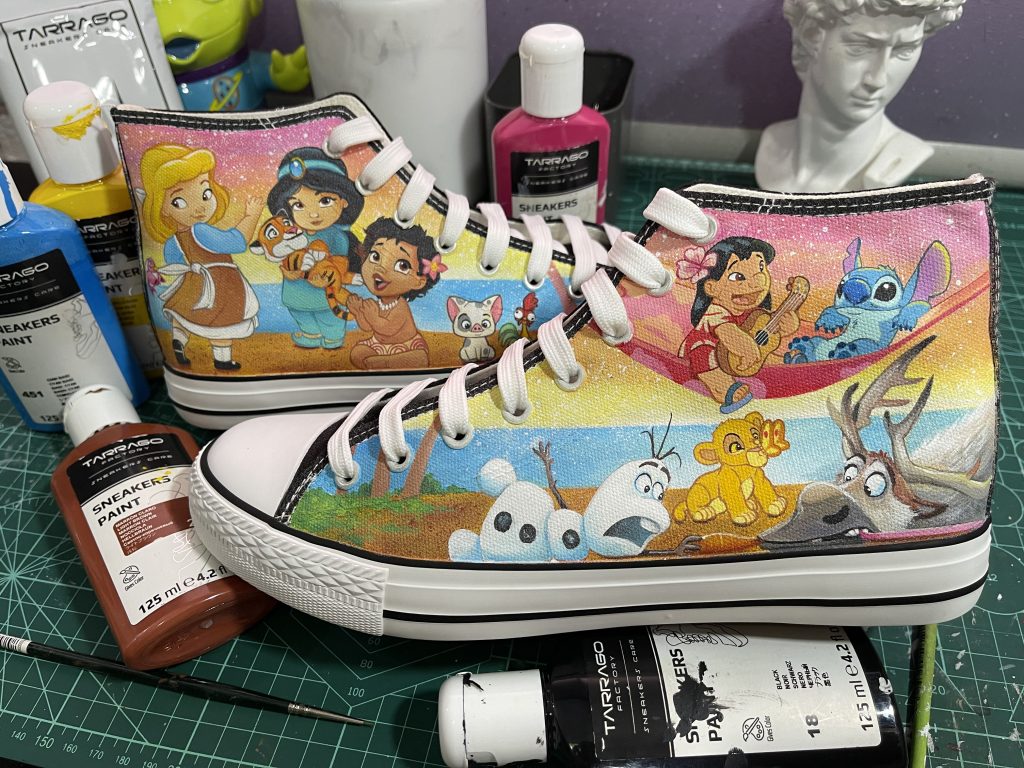
Where do you get your inspiration from?
I like to get to know the work of other artists (customisers or not) by looking on social networks or on pages like Pinterest; when I’m not painting, I spend a lot of time looking for images that, perhaps, I can use in a future project and, thanks to this, I discover works, artists and other ways of working.
What have been the challenges in starting to customise?
Starting to customize was a challenge by itself: it was something that I started out of pure curiosity and which, through trial and error, I have managed to bring to the level where I am now. For me personally it is a daily challenge because, day by day, I strive to be a better artist, self-demanding like no other and always in continuous learning. All these factors have led me to have a work methodology that, to this day, is the one that works best for me and that allows me to be 200% efficient.
What are your role models?
Although, within the world of customisation, I follow several artists, I do not consider them as references for my work; through hard work and many years, I have managed to have my own recognisable style, the result of effort and perseverance, and not by taking the work of other artists as a reference.
What part of the process do you enjoy the most?
Every part of the process has something special for me. But, within my creative process, I have two favourite parts, totally antagonistic but that I enjoy increasingly more: the initial sketch and the final outline. Since I started in this field, I’ve liked to send the client a digital sketch so that both parties are clear about the design from the beginning. I really enjoy this part of the process because it is the “foundation” before I start painting: I enjoy documenting, looking for images that match in position, color harmonies and contrasts. The outlining, on the other hand, is the last part of the process and, for me, the most delicate part, as the stroke and intensity of a line transmits many things to the final result.
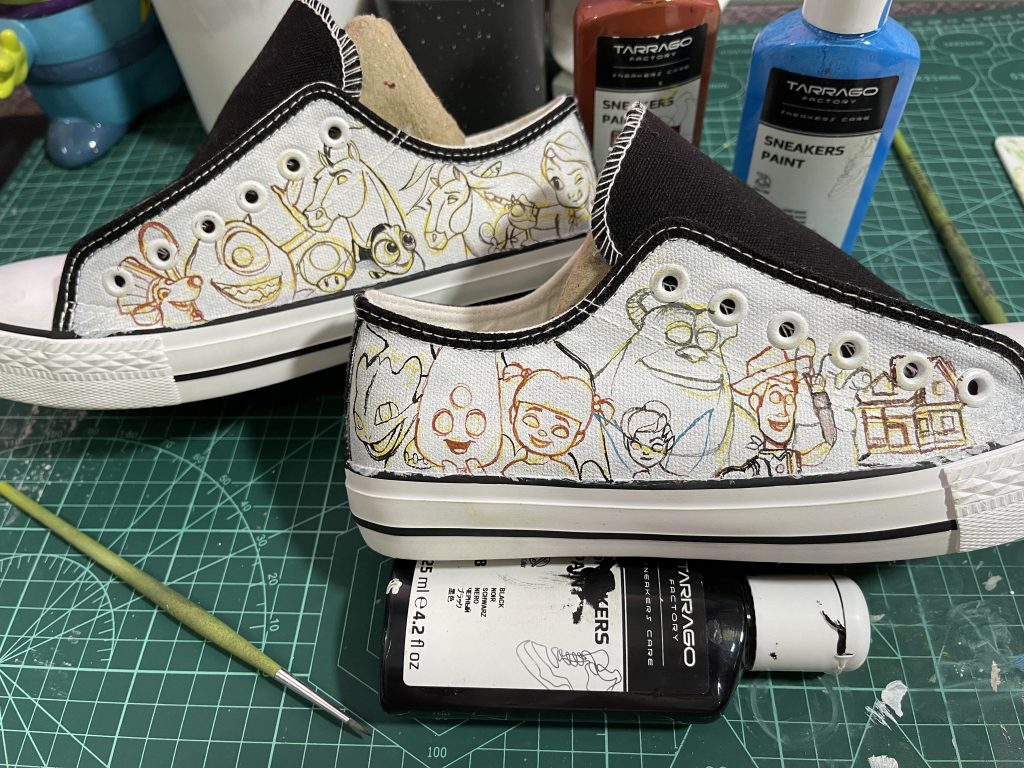
What advice would you give to someone starting to paint?
As with everything, no start is easy: you need to put a lot of hours into something that, although it may seem so, is by no means simple. And that is where the degree of commitment, perseverance and sacrifice of each person comes into play. In my case, I have had to sacrifice whole days and weeks of rest, holidays or meetings with friends and family in order to reach the point where I am now and to be able to live from my passion since I was a child.
What products do you think we would need to get started?
To start out, besides having the desire, you must have a good material. When you are starting out in this world you don’t need to make a huge investment in dozens of paints, you have to go step by step getting to know the material you are going to work with and experiment a little. Without a doubt, to get started, I recommend the Tarrago “starter pack”, a kit that includes the 3 primary colours, white and black, with which you have more than enough to try and to get all the tones of the chromatic palette.
What do you think is the best technique for painting on canvas?
I don’t know if there is a “better” technique; what I know is the technique that works best for me and which I apply in all my work, whether on canvas, denim or synthetic leather: apply a good base of white (in thin layers and as evenly as possible) and then outline and paint the design on top. I use the paint as it comes out of the can, as for me it has the perfect density and plasticity for the results I’m looking for. But it is also true that there are products (such as Tarrago’s “Soft Maker“) that, mixed with the paint, give a plus of fluidity and flexibility when painting on these surfaces.
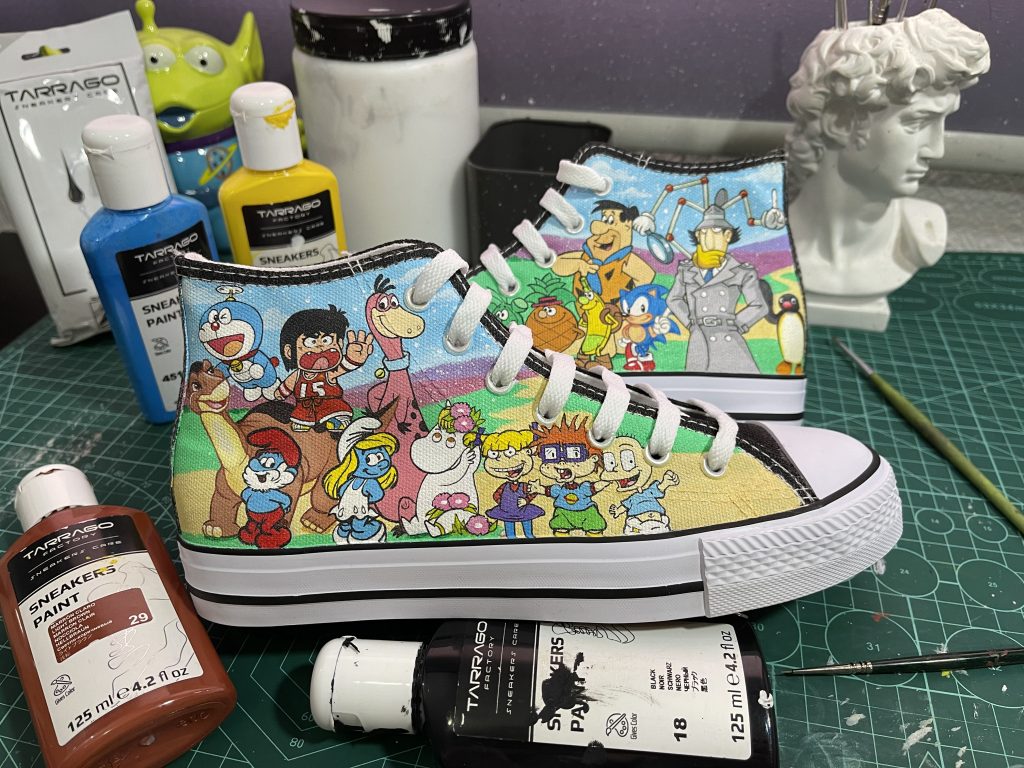
What are your favourite paint sneaker colors?
Maybe because I’m old school, but my “favourites” are the primary colors, thanks to which we can bring out the rest of the colors and ranges. But also, maybe because of the bad experience I have had with these colors in other brands I have used before, the warmer range (yellows-oranges-reds) is my favourite.
And finally, what projects are you looking forward to in the future?
I really miss painting something larger; I come from the faculty of fine arts, where I painted really big pieces, and also from painting fallas in Valencia for a few years, so anything that’s large-scale painting, I love it. So, I love everything that is painting on a large scale. Who knows? Maybe in a while I’ll take the leap and combine small formats (sneakers or jackets) with something bigger, like big canvas or murals.
Thank you very much Nando for your time.
Don’t forget to follow him on:
